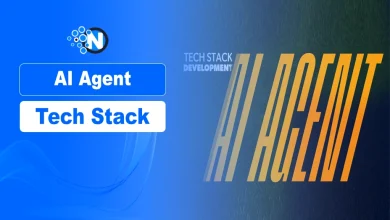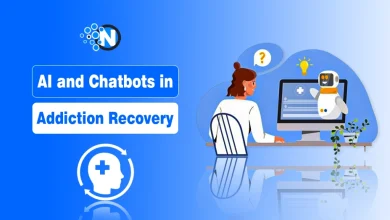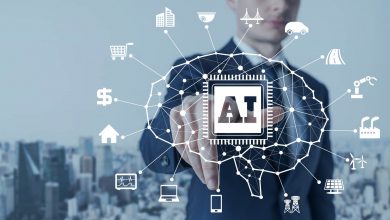7 Ways AI Workflows Are Transforming Digital Marketing in 2025

It’s 2025, your marketing team doesn’t just need to run campaigns. However, it needs to collaborate with intelligent systems that predict trends before they happen, create content to optimize results.
This has become at your fingertips with the help of Artificial Intelligence, which connects digital tasks, tools, and data together. But the question that arises in marketers’ minds: HOW?
Are you trying to find an authentic answer to such a question? If so, then keep reading because this article has covered 7 ways AI workflows are changing digital marketing in 2025.
What are AI Workflows in Digital Marketing?
AI workflows in digital marketing are automated, intelligent sequences of tasks powered by artificial intelligence that manage, optimize, and execute marketing activities.
These process often needs minimal human input to perform better and give results of marketing campaigns. Moreover, these approaches combine data-driven decision-making, machine learning models, and automation tools to streamline everything from audience categorization to performance analytics.
How AI Workflows Transform Digital Marketing – 7 Ways
1. Hyper-Personalized Customer Experiences
Those days are gone when generic emails and broad messaging were successful marketing techniques. AI workflows are now equipped with hyper-personalized experiences that are based on real-time user data.
No matter if it’s behavior-triggered email campaigns, dynamic website content, or targeted ads, marketers can automate delivery based on user intent. Further, they can prefer their users’ preferences to conceive things, and their engagement history for better outcomes in real time.
For Example: If a user browses a specific product category, an AI-driven workflow can immediately trigger a personalized follow-up email, product recommendation, or discount offer, without human intervention.
Why it matters: Personalized marketing increases conversion rates, brand loyalty, and ROI. With AI handling the data and logic, it’s scalable and efficient.
2. Smarter Content Creation and Planning
As of 2025, content is still king, but it’s getting an AI-powered improvement with ideas and refurnished techniques. Some AI tools are integrated into workflows to have assistance in creating ideas, outline generation, keyword optimization, and even visual content creation.
More importantly, these tasks that are automated through aren’t just mundane but fully customizable according to the chronological steps. With an AI workflow, marketers can set up sequences like:
- Pull trending keywords from analytics
- Generate blog outlines or social posts
- Schedule drafts in CMS or social media platforms
The entire content planning process becomes streamlined, consistent, and faster, just with the integration of AI into mundane tasks.
3. Real-Time Campaign Optimization
AI workflows can analyze ongoing campaign performance and make adjustments on the way to improve the results for higher success. Instead of waiting for weekly reports, marketers can trigger automated actions based on specific performance thresholds.
For instance:
- If a Facebook ad’s CTR drops below 1%, pause the campaign automatically.
- If a landing page exceeds a bounce rate of 70%, alert the UX team.
AI-powered logic removes manual guesswork and introduces real-time reactivity, that are critical in competitive markets.
4. Efficient Lead Qualification and Nurturing
Lead management often eats up time and resources, especially when done manually while implementing strategies and getting results. These tasks are also now being handled by AI when it’s integrated with CRMs and marketing tools for businesses.
Here’s a typical lead nurturing workflow:
- Capture a lead from a website form
- Score the lead based on behavior and demographics
- Assign it to a sales rep if it meets qualification criteria
- Automatically send nurturing emails if not yet sales-ready
This setup ensures no lead is left behind, and sales teams only deal with the most expected opportunities.
5. Predictive Analytics for Better Decision-Making
Marketing isn’t just about reacting to trends; it’s about staying ahead of the market curve to stand out. AI workflows use predictive analytics to forecast trends, customer behaviors, and campaign outcomes to curate new techniques to engage customers.
Moreover, if marketers integrate AI models with historic performance data, they can predict:
- When a user is likely to churn
- Which products are likely to sell next month
- What time of day delivers the best engagement
This allows brands to make proactive, data-driven decisions rather than reactive ones by one to guess which is best.
6. Seamless Cross-Platform Automation
Marketers need to try and analyze each platform, like social media, email marketing tools, analytics dashboards, and ad networks, to get expected results. On the other hand, AI workflows serve as the glue that connects all these tools in a unified, automated ecosystem.
Now, imagine this:
- A user clicks on a Google ad
- Their data gets logged in your CRM
- They are automatically added to an email list
- Their actions trigger Slack alerts and analytics dashboards
Such crossovers and integration aren’t impossible, but these approaches are expected at the start of each marketing campaign. Furthermore, AI integration makes it seamless with effective implementation.
7. Reduced Burnout and More Strategic Focus
Perhaps one of the most underrated benefits of AI workflows is their impact on human teams. For instance, marketers can automate repetitive tasks, like data entry, email follow-ups, and report generation.
This approach helps them to spend more time on creative strategy, customer relationships, and innovation. As more brands adopt AI workflows, they’re discovering that efficiency isn’t just about speed; it’s about freeing up human potential.
Final Thoughts
After reading the article, you may get to know that the future of digital marketing lies in AI workflows. You won’t only get tasks faster, but you will be able to have a more smarter companions in the shape of chatbots.
These chatbots will help you create customizable and analyzed techniques that will turn complexities into clarity for better customer engagement. As of 2025, the question isn’t whether to adopt AI workflows, but it’s how quickly you can implement them.




